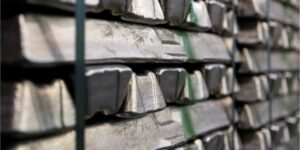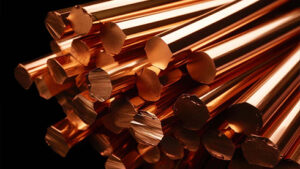
In January-February 2025, Ukraine increased imports of aluminum and aluminum products by 23.4% to $74.56 million. In February alone, aluminum imports amounted to $37.9 million. At the same time, exports of aluminum and aluminum products increased by 27.8% to $19.9 million.
Aluminum is widely used as a structural material. The main advantages of aluminum are its lightness, stamping resistance, corrosion resistance, high thermal conductivity, and non-toxicity of its compounds. In particular, these properties have made aluminum extremely popular in the production of cookware, aluminum foil in the food industry, and packaging. The first three properties have made aluminum the main raw material in the aviation and aerospace industries (recently it has been replaced by composite materials, primarily carbon fiber). After the construction and production of packaging, such as aluminum cans and foil, the energy sector is the largest consumer of the metal.

In January-February 2025, Ukrainian companies increased imports of copper and copper products by 4% compared to the same period of 2024 – up to $30.277 million.
According to customs statistics, copper exports increased by 31.3% to $14.305 million in the period under review. In February, copper was imported for $16.462 million and exported for $7.354 million.
Copper is widely used in electrical engineering, pipe manufacturing, alloys, medicine and other industries.

In 2024, Ukraine imported seeds of mainly grains and oilseeds mainly from the European Union, most of them were imported of hybrid corn, and the purchase of rapeseed was also increased, the press service of the National Research Center Institute of Agrarian Economics reports.
“Ukraine has purchased seeds of grains and oilseeds, sugar beets and vegetables abroad for $381.3 million. At the same time, the vast majority of supplies – 52.5% – were made last year by the EU member states. They sold more than $200 million worth of seeds to domestic farmers. The share of the United States of America is 19.0%, and the volume of imports from this country amounted to $72.6 million,” the report says.
In the structure of grain seeds imports to Ukraine in 2024, hybrid corn accounted for 95.8%, or 7.6 thsd tonnes. Ukraine purchased 0.7 thsd tonnes of seed wheat, 0.3 thsd tonnes of barley, 42 thsd tonnes of rye, and 32 thsd tonnes of sorghum. The main suppliers were France, Germany, the Czech Republic, Denmark, and Italy.
The share of sunflower seeds in the imports of oilseeds is 81.5% (17.4 thsd tonnes), while 4.1 thsd tonnes of rapeseed and 0.7 thsd tonnes of soybeans were also purchased. The purchase of seeds of grains and oilseeds accounts for about 80% of domestic imports, where sunflower seeds account for 55% of its value, which last year amounted to $211.1 million.
In addition, Ukraine purchased more than three quarters of sunflower seeds from the US – 5.5 thsd tonnes for $72.5 mln (34.3%) and Turkey – 7.9 thsd tonnes for $85.7 mln (40.6%). Smaller volumes of sunflower seeds came from France – 1.9 thsd tonnes worth $24.8 mln (11.7%), Italy – 0.6 thsd tonnes worth $4.7 mln (2.2%) and Hungary – 0.4 thsd tonnes worth $5.0 mln (2.4%).
Only one tenth of the total amount of seed purchases – $41.4 mln – was spent on corn, the main suppliers of which were France – 2.7 thsd tonnes ($19.0 mln). tons for $19.8 million (47.8%), Romania – 1.7 thousand tons for $6.4 million (15.5%), Austria – 1.6 thousand tons for $7.5 million (18.1%), and Hungary – 1.1 thousand tons for $3.9 million (9.5%), as well as Germany (68 tons for $1 million) and Italy (131 tons for $0.4 million).
As for soybeans, the country imported the seeds worth $2.9 mln from Canada (270 tons – 38% of soybean imports), Austria (186 tons), Romania (119 tons) and France (89 tons).
The purchases of rapeseed in 2024 increased compared to the previous year to $45.2 mln. The main suppliers were Germany – 1.7 thsd tonnes for $17.6 mln (38.9%), France – 1.1 thsd tonnes for $12.4 mln (27.4%), Spain – 0.9 thsd tonnes for $11.7 mln (25.9%), and for the first time New Zealand, which supplied 209 thsd tonnes for $1.9 mln.
In addition, the volume of purchases of seeds of niche crops, including sorghum, flax, hemp and mustard, is increasing. The main suppliers are EU countries, including France, Germany and Denmark.
“The possibility of obtaining seeds from the world’s leading countries allows national breeding and seed production to compete freely abroad, which improves their further prospects for development and entry into the markets of Europe and America,” the Institute of Agrarian Economics summarized.

In 2024, Ukraine increased its total imports of seeds of grains and oilseeds, sugar beets and vegetables to $381.3 million, which is 3.2% more than a year earlier, the press service of the National Research Center Institute of Agrarian Economics (IAE) reported.
According to the report, in 2024 Ukraine imported 8.6 thousand tons of grain seeds and 22.2 thousand tons of oilseeds totaling $302.3 million. Scientists noted that compared to 2023, the cost of imports of these crops decreased by 3.8%, but it is almost 2.5 times higher than domestic exports of seeds, which amounted to $122.6 million.
In addition, sugar beet seeds worth $50.1 million and vegetable seeds worth almost $28.9 million were purchased abroad.
“The volume of purchases of foreign-bred seeds of grains and oilseeds has been gradually decreasing since 2022, while imports of sugar beet and vegetable seeds have been on the rise for three consecutive years,” the scientists emphasized.
According to their information, in 2023, 727 tons of sugar beet seeds were imported for the amount of $32.8 million, and last year the volume of purchases of this type of agricultural products increased by 52.7% and amounted to almost 973 tons. At the same time, the price of sugar beet seeds in 2024 increased to $51493 per ton compared to $45117 per ton a year earlier.
According to the IAEA, the volume of imported seeds fully covers the needs of domestic farmers, as it will allow to allocate more than 300 thsd ha of farmland for sugar beet in 2025. For comparison, in 2023-2024, the area under sugar beet was 220-250 thousand hectares.
In addition, the value of imported vegetable seeds increased by 27.3% last year compared to the previous year and amounted to $28.9 mln. In physical terms, purchases increased by 17.2% to 945 tons.
“Thus, in 2024, due to the increase in the cost of purchasing sugar beet and vegetable seeds abroad, total seed imports increased by 3.2%. The increase in the cost of imports was largely due to the purchase of higher quality seeds and higher categories of additive and basic forms, which are traditionally several times more expensive than certified seeds of different years of certification,” the Institute of Agrarian Economics summarized.

In February 2025, Ukraine imported 963 tons of pork, which is three times more than in January of this year, according to the Ukrainian Pig Association (UPA).
“The revival of import activity took place against the backdrop of an unconventional increase in purchase prices for the season. Instead, the average price of a kilogram of imported meat raw materials was lower than the minimum price level of last year, which was recorded in January – $1.89 per 1 kg and $1.92 per 1 kg at the end of winter,” analysts said.
According to their information, the products imported to Ukraine do not compete with Ukrainian pork, so imports still do not affect prices.
“Since the domestic supply of pork this year is less than the previous year, during the period of increased demand for meat in spring and summer, imports may increase, and the range of such products will be more diverse. For example, if prices in European markets, where we import the lion’s share of pork, decline while prices in Ukraine remain high, it will be economically justified to import cheaper raw materials. In this case, the pressure on the domestic market and its pricing from imports will increase, but we are not seeing this yet,” the industry association said.
Although February imports are the largest in the last 14 months, according to representatives of the meat industry, its presence on the market is still almost imperceptible, experts say.
In January and February 2025, pork exports remained at least 292 tons per month, so the total for the first two months amounted to 587.4 tons, or $1.6 million in monetary terms.
At the same time, the geography of foreign trade in Ukrainian pork remains limited. The main buyer countries for Ukrainian pork are Hong Kong, where 30% of external shipments were sent, the UAE – 22%, Malaysia and Georgia – 13% and 10%, respectively. The remaining Ukrainian pork was exported in small volumes to Bahrain, Liberia, and South Korea.